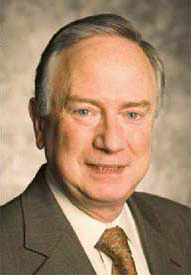A new study from Dartmouth Medical School documents “staggering variations in how hospitals care for chronically ill elderly patients.” The study points to problems with quality and faults Medicare for unnecessary spending. It goes on to say that less use of acute care hospitals and fewer physician visits could lead to better results for patients.
Explore This Issue
September 2006The study was done at Dartmouth’s Center for Evaluative Clinical Services under the direction of John E. Wennberg, MD, MPH. He said that three issues drive differences in cost and quality of care: an unmanageable supply of resources; limited evidence about what kinds of care really benefit the chronically ill; and falsely optimistic assumptions about conditions that cannot be cured.
The Numbers
The study looked at the records of 4.7 million Medicare enrollees who died of chronic disease between 2000 and 2003. The researchers came to the conclusion that Medicare could have saved $40 billion if all hospitals practiced the high-quality, low-cost standard set by the Salt Lake City region. It also found that hospitals that treat patients more intensively and spent more Medicare money did not get better results. In fact, regions with the best quality and outcomes used the fewest resources: Rochester, Minn., and Portland, Ore., in addition to Salt Lake City, Utah. Patients there are admitted less frequently to hospitals, spend less time in an ICU, and see fewer specialists.
“This excessive and misplaced use of resources is only one manifestation of a totally chaotic health-care system.” – —Alfred Munzer, MD
The variation among academic medical centers for the average number of hospital days during the last six months of life ranged from 12.9 days at St. Mary’s Hospital in Rochester, MN, to 23.9 days at New York Presbyterian Hospital. The University of California–Los Angeles had the highest number of ICU days at 11.4—3.5 times higher than University of California-San Francisco (3.3 days). Medicare enrollees at New York University Medical Center had the most physician visits (76.2), the Robert Wood Johnson Hospital in New Brunswick, NJ, had the next most (57.7). At the University of Kentucky in Lexington there were only 18.6 physician visits.
Dr. Wennberg said that resources per capita devoted to managing chronic illness are increasing steadily each year—13.6% more ICU beds in 2003 than in 2000, 13.4% more for medical specialists, and 7.7% more for primary physicians. Acceleration was greatest in regions already using the most care.
Causes of the Trends
Medicare and other payers are part of the driving force behind the increases. “They encourage overuse of acute care hospital services and proliferation of medical specialists. The care of people with chronic illness accounts for more than 75% of US health-care expenditures, indicating that overuse and overspending is more than a Medicare problem,” said the report.

Leave a Reply